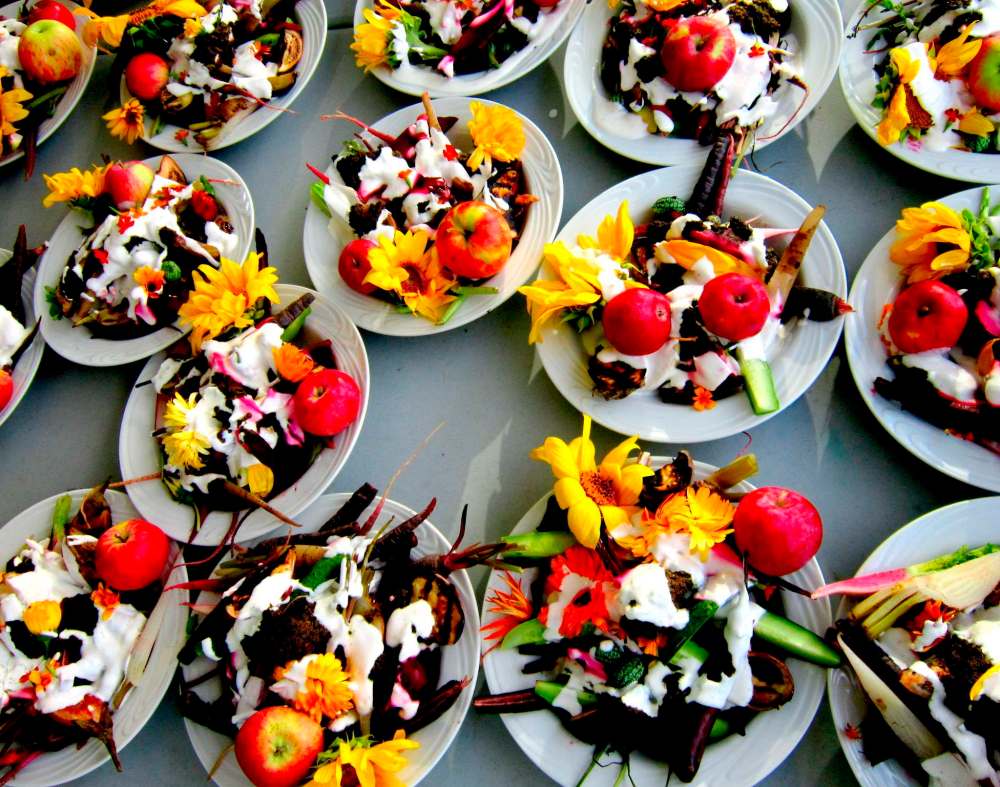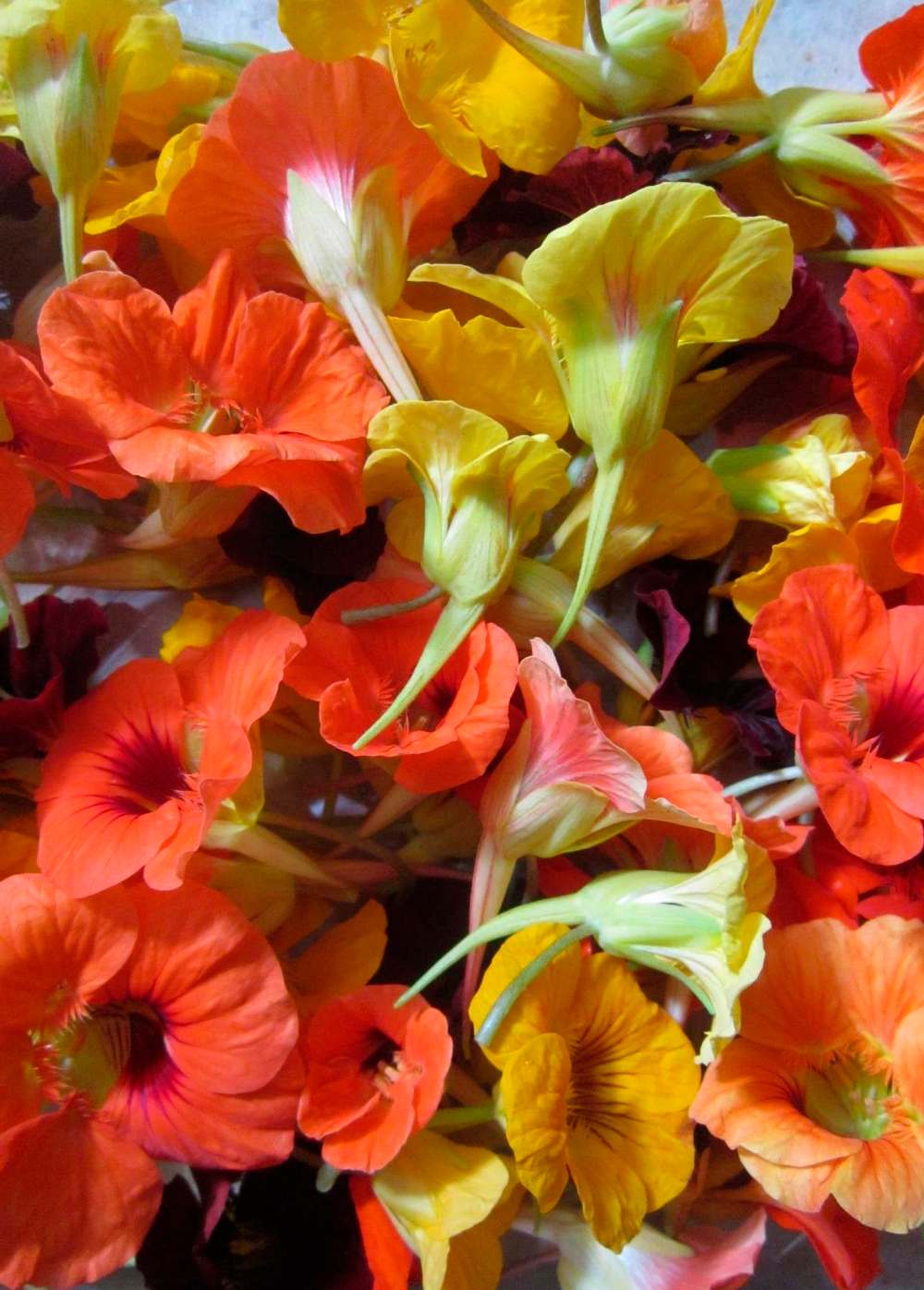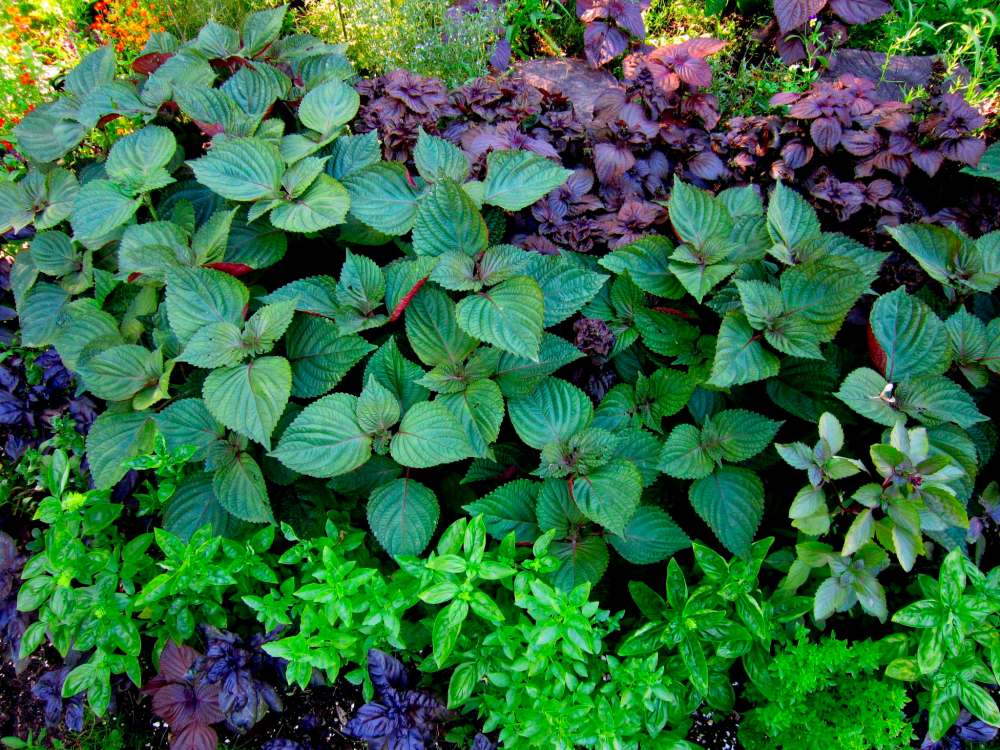Keeping it local
Food gardener offers tasting tours, shares her bounty with chefs
Advertisement
Read this article for free:
or
Already have an account? Log in here »
To continue reading, please subscribe:
Monthly Digital Subscription
$0 for the first 4 weeks*
- Enjoy unlimited reading on winnipegfreepress.com
- Read the E-Edition, our digital replica newspaper
- Access News Break, our award-winning app
- Play interactive puzzles
*No charge for 4 weeks then price increases to the regular rate of $19.00 plus GST every four weeks. Offer available to new and qualified returning subscribers only. Cancel any time.
Monthly Digital Subscription
$4.75/week*
- Enjoy unlimited reading on winnipegfreepress.com
- Read the E-Edition, our digital replica newspaper
- Access News Break, our award-winning app
- Play interactive puzzles
*Billed as $19 plus GST every four weeks. Cancel any time.
To continue reading, please subscribe:
Add Free Press access to your Brandon Sun subscription for only an additional
$1 for the first 4 weeks*
*Your next subscription payment will increase by $1.00 and you will be charged $16.99 plus GST for four weeks. After four weeks, your payment will increase to $23.99 plus GST every four weeks.
Read unlimited articles for free today:
or
Already have an account? Log in here »
Hey there, time traveller!
This article was published 26/01/2019 (2471 days ago), so information in it may no longer be current.
When Tiffany Grenkow decided to forgo a paycheque so that she could raise her children full-time, she searched for an alternative space to her shady backyard where she could grow a substantial amount of her own food. An economic decision at the time, fast-forward 10 years and today, the flavourful fruits of her labours — more than 150 different edible varieties — have become go-to ingredients in some of the best signature dishes created by top chefs in our city.
Winnipeg’s Mandel Hitzer, chef and owner of Deer + Almond, says Grenkow is a hero in the local food community. “She is educating people,” Hitzer says, “and changing the way we think about food.” Hitzer himself has shaped and expanded the conversation around food. What is so unique and special about what Grenkow is growing in her six gardens?
Ten years ago, when Grenkow rented a garden plot from the City of Winnipeg, she built a lasagna garden, a no-dig method consisting of layers of organic matter.

“I used a bike trailer,” she says, “to haul every bit of organic matter I could gather: coffee grounds, compost supplied by a friend, even old lentils in my pantry.” Today, as an urban farmer without her own acreage, Grenkow grows edibles in borrowed places within Winnipeg’s boundaries, as well as on farmland in the communities of St. Georges and Anola.
No stranger to food gardening — she was growing bell peppers on a rooftop when she was in her 20s and residing in Winnipeg’s West End — Grenkow is fascinated by new flavours and empowered by experimenting with different ways of using the fruits, herbs and vegetables that she grows. A food explorer, she is also driven to seek new connections. Great food, after all, deserves to be shared with others.
In two short years after relocating her garden to a plot run by the Riverview Garden Society, Grenkow’s annual harvest exceeded 550 kilograms. Her fearless interest in strange and unusual edibles piqued the palates of local chefs who wanted something different. “Connecting a chef with a new flavour they haven’t tasted before,” Grenkow says, “is like giving an artist a new paint colour or medium for their art.”
Grenkow romances local chefs with tasting tours of her gardens. Exciting new food pairings and innovative recipes are inspired. “Chefs taste the difference between organic, locally grown food and food that is mass produced,” Grenkow says. But Grenkow has also imparted a greater understanding of the importance of sustainably grown food.
“I use permaculture principles to grow my food,” Grenkow says, “so I grow mostly herbs that self-seed.” Shiso (Perilla frutescens) is popular in many Asian cuisines. A favourite variety is Britton shiso, which has dark green leaves with serrated edges and rich burgundy-red undersides. Grenkow grows it for Hitzer, who uses the highly ornamental leaves to colour and flavour a vinegar recipe. She also grows a purple form of shiso.

Basil, of course, is in high demand. Some of the many varieties that grow in her gardens include large-leaf types such as Genovese basil; Red Rubin with reddish-purple leaves and a stronger flavour than sweet basil; and Boxwood basil, which has a bushy form, tight leaves and a sweetly spicy taste.
Grenkow says the hardiest basil she grows is Blue Spice, which has heavily fragrant flowers and spicy vanilla overtones. She says it doesn’t have the typical basil profile, but instead has an extremely fruity flavour that is uncommon. Blue Spice basil has been a huge hit with foodies.
One year, Hitzer was looking for a special herb for a soup he was making that included smoked Manitoba goldeye. Grenkow had just the thing — Smokey Bronze Fennel. Aromatic with feathery red-tinged foliage and distinct licorice flavour, all parts of this unique herb are edible, including the roots. “We ran out to the garden,” Grenkow says, “sampled the leaves and it was a match made in heaven.”
Grenkow also custom grows garnishes. Petite greens are larger than microgreens and grown for their edible shoots, stems and blossoms. Parsley Pea is a snap-green with delicious tendrils. It can be used in salads and sandwiches or as a unique garnish.
Another edible green that Grenkow enjoys growing is Okahijiki, a traditional Japanese culinary herb that is also known as land seaweed. “It’s like nothing else,” Grenkow says. “Okahijiki has these spiky, juicy and tender little sprigs of green — it just has a crunchy, slightly salty thing going on. It’s hugely popular in Italy.” A chef might use it to garnish a piece of fish.

“These are the types of things I’m trying to bring to the table more often,” Grenkow says.
Edible flowers have numerous culinary uses. Daylily buds are delicious, Grenkow says. “They have the flavour of fresh figs.” One chef candied a batch of her daylily buds, then cut them into long, thin ribbons (chiffonade) and placed them on top of a panna cotta. Divine.
Grenkow can’t resist growing nasturtium. Dwarf varieties like Alaska Mix fit easily into the garden and seem to produce their flowers more quickly than larger varieties, she says. Alaska Mix has attractive green and cream marbled foliage and pretty yellow and orange blooms. The flowers and buds have a subtle but peppery flavour, but the leaves taste best when they are picked young, Grenkow says. Chefs will sometimes pickle the seedpods, she says, for a taste similar to that of capers.
Last summer, Grenkow grew gladiolus for the first time. The open flower is used in recipes such as salads and desserts. The flavour is delicious and sweet, she says, with a hint of honey.
Grenkow volunteers as a garden club instructor and orchard steward at the Sustainable South Osborne Permaculture Commons. Together with a small volunteer taskforce, she grows haskap honeyberry plants. There are more than 140 fruit trees and numerous types of small fruit such as blackcurrants, redcurrants, gooseberries and pin cherries. Grenkow says the opportunities for her to grow and learn there are immense.

The Harvest Dinner at Sustainable South Osborne is an annual fundraiser that highlights the produce grown in their community gardens. Local chefs donate their time to create delectable dishes. In 2016, Hitzer created a colourful recipe using the produce grown by Grenkow: Baby Sugar beets, Bull’s Blood beets, Purple Haze carrots, White Icicle carrots, cucamelons, grilled Patty Pan, Korean cucumbers, grilled eggplant, Torpedo onions, Winter radish, herbs, Signet marigolds, calendula and basil. Apples from the orchard decorated every plate.
The following year, the menu included a dish called Garden Jewels: currant tomatoes, cucamelons, Globe basil and begonia blossoms.
Grenkow is the guest editor of The 2019 Prairie Garden: Growing Food. The Prairie Garden is an annual gardening book published in Winnipeg that has been inspiring Prairie gardeners since 1937. The 2019 edition focuses on growing our own food and contains more than 50 articles with topics ranging from heirloom vegetables, including heirloom vegetables, Prairie-hardy fruits and perennial edibles, growing techniques and new ways of preserving the harvest.
Join Grenkow and the Prairie Garden committee at the book launch at McNally Robinson, Grant Park, at 2 p.m. on Feb. 24.
colleenizacharias@gmail.com


Colleen Zacharias
Gardening columnist
Colleen Zacharias writes about many aspects of gardening including trends, plant recommendations, and how-to information that is uniquely relevant to Prairie gardeners. She has written a column for the Free Press since 2010 and pens the monthly newsletter Winnipeg Gardener. Read more about Colleen.
Every piece of reporting Colleen produces is reviewed by an editing team before it is posted online or published in print — part of the Free Press‘s tradition, since 1872, of producing reliable independent journalism. Read more about Free Press’s history and mandate, and learn how our newsroom operates.
Our newsroom depends on a growing audience of readers to power our journalism. If you are not a paid reader, please consider becoming a subscriber.
Our newsroom depends on its audience of readers to power our journalism. Thank you for your support.

